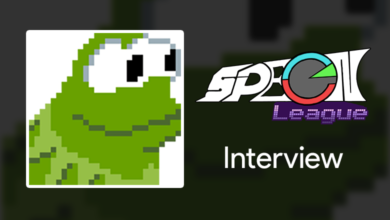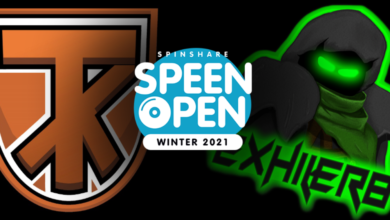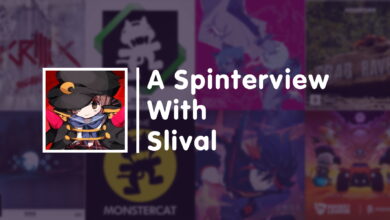A Spinterview With Programmatic: Poetry in Patterns
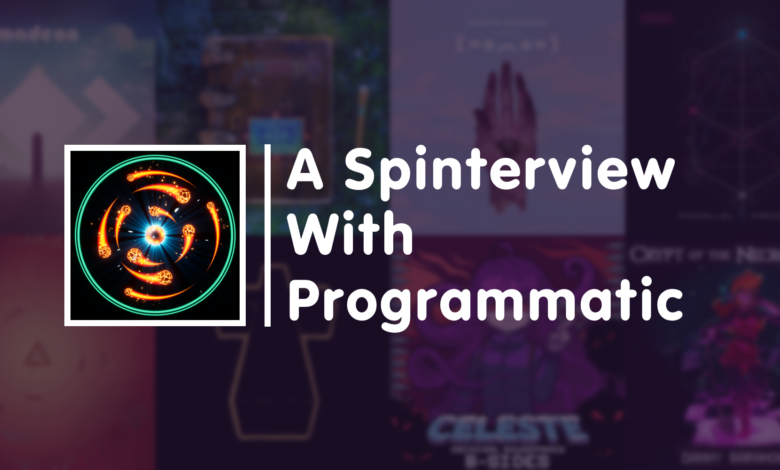
Ever since the earliest days of Spin Rhythm customs, there were people who would go on to influence the charting scene in ways nobody could predict at the time. Influence came in all forms at the time; some had distinct charting styles and others had technical knowledge of the inner workings of the game. The impact that these people had would go on to shape the community even to this day. But I’d argue that the person who had the largest role in the evolution of the charting scene was Programmatic.
Programmatic is undoubtedly one of the most recognizable and influential figures in the short time SpinShare has been active. With a library consisting largely of the electronic pop and rock of Madeon, Anamanaguchi & Porter Robinson, songs from the games Celeste, Crypt of the Necrodancer & Risk of Rain, and all sorts of songs in between – Programmatic’s charts are largely known for how easy they are to pick up and play, while still being full of variety. Beyond his charts, however, he’s also known for developing the SRTB editor, a tool considered essential by many. And even beyond that, Programmatic helped in establishing a set of standards for both charting and assessing difficulty; the rapidly evolving customs scene was undoubtedly molded by his influence.
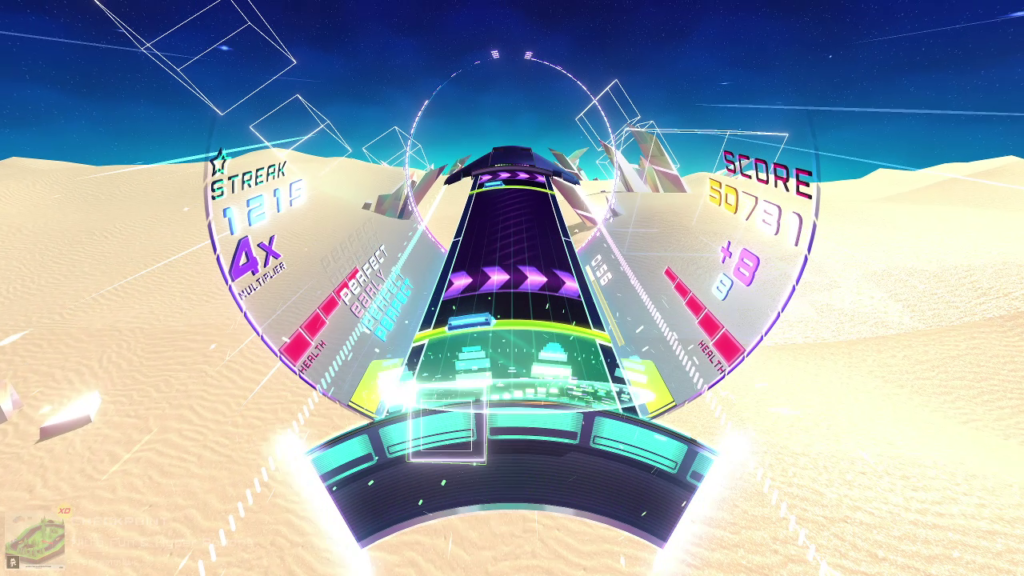
The extent of Programmatic’s influence in the SpinShare community can not be understated, on top of his undeniable ability in charting. I talked with Programmatic to understand why his charts are something comforting for us to play.
What got you into Spin Rhythm XD? How did you find out about it?
I’ve been a fan of rhythm games ever since I first played Rock Band in middle school (drums being my preferred instrument). Since then, I’ve played various other rhythm/music games such as the Bit.Trip series, Crypt of the Necrodancer, and Thumper. Before SRXD, I was primarily a Celeste speedrunner, but I had been playing the game less and less as I had just gotten a new job and moved into an apartment. It was in early April, not long after the customs update had released, that I saw Lev, a fellow Celeste runner, playing SRXD. I immediately bought it and started playing it, and I could not stop.
What made you decide to chart for Spin Rhythm?
I had a desire to make charts for rhythm games ever since I started playing them, but the fact that I mostly listened to electronic music meant that charting for something like Guitar/Clone Hero or Rock Band wouldn’t be the best option. I had dabbled a bit in the chart editor for osu!, but I didn’t enjoy the game enough to be eager to chart for it. When I started playing SRXD, I immediately tried out its editor and made abominations like old Burnt Rice, Cut the Kid, and the never-released Stress. I had also attempted to make a chart of Icarus by Madeon, but lost my chart due to a saving bug that the editor had at the time (perhaps for the best, since my recent chart of Icarus is better than that old chart could have ever been).
What’s your general process behind a chart? What makes you decide you want to chart a song, and what about that song influences the chart’s overall design?
I take a very linear approach to charting, in the sense that I rarely skip ahead to chart the parts I like first. I feel I would lose interest if I saved all the less interesting bits for last, as opposed to having the fun parts to look forward to. Usually, I visualize the general concept of a chart when I listen to music in my free time, often zoning out and picturing how the sounds I’m familiar with would translate to notes in-game.
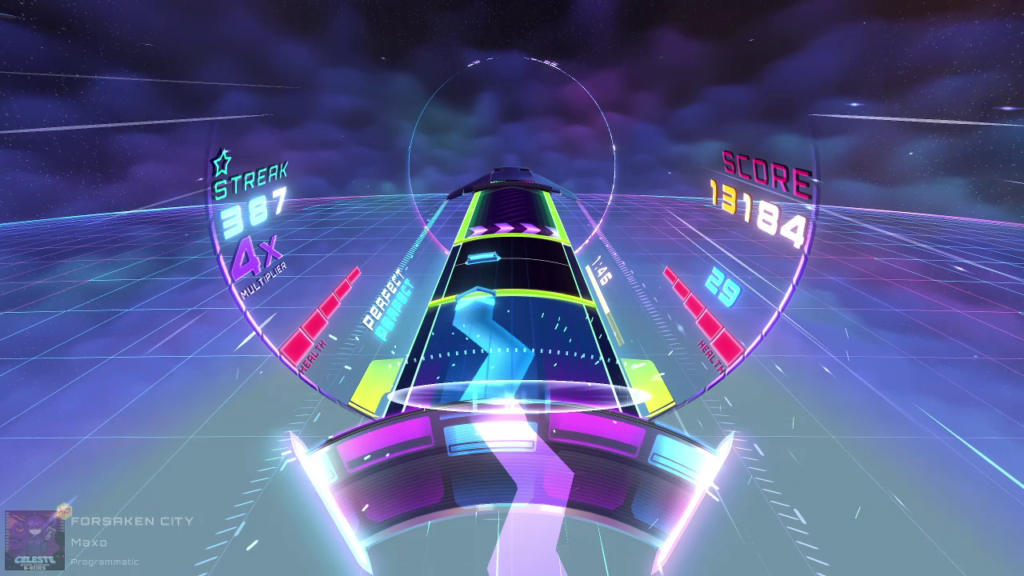
The more dense a song is with unique rhythmic patterns, the more eager I am to chart it, but there are also many cases where I’ll like a song so much that I decide to chart it even knowing that the chart won’t be especially interesting; in that sense, I see charting not only as a way of providing players with new content to play, but also exposing them to good music that they might not have heard before.
Is there any way that you would describe your charting style? What makes it unique, and what makes it similar when compared to other charters? Are there any patterns you’re particularly fond of?

Programmatic 01/28/2020
Is there any way that you would describe your charting style? What makes it unique, and what makes it similar when compared to other charters? Are there any patterns you’re particularly fond of?
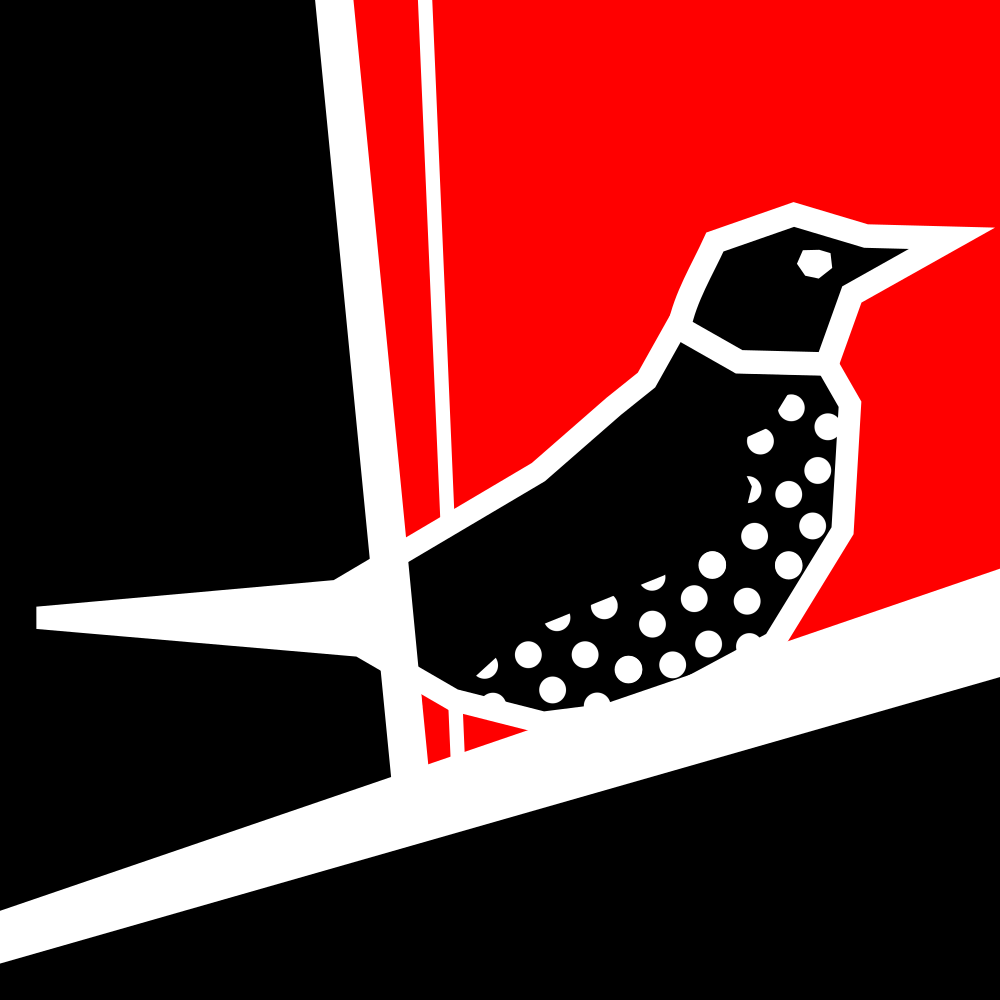
imfallinfree 01/28/2020
Is there any way that you would describe your charting style? What makes it unique, and what makes it similar when compared to other charters? Are there any patterns you’re particularly fond of?

Programmatic 01/28/2020
Shush I’m editing it
I suppose the best way to describe my charting style would be “feel first.” When I chart, I usually make it my first priority to make the chart feel as much like you’re playing the song as possible, looking for ways to associate certain note types with certain sounds and putting emphasis on the most exciting parts of the song. I generally avoid making patterns that might be interesting in isolation, but don’t exactly line up when you put them together with the music, a design choice that some charters do really well, but can lead to awkward-feeling patterns if you aren’t careful.
Given the number of charts that I make and my preference to usually construct my charts from tried and true patterns, my charts are often considered “samey,” but it doesn’t usually bother me much since my primary goal is to have my charts be an interactive medium through which players can enjoy the music. On the topic of tried and true patterns, some that I’ve come to enjoy charting the most would be Zick spins, diddle (ABAA) tapping, and wide sliders that jump or bounce on beats. (edited)

imfallinfree 01/28/2020
> diddle (ABAA) tapping
lmao what

Programmatic 01/28/2020
Tap-beat-tap-tap

imfallinfree 01/28/2020
gotcha
Are there any other charts or charters that you look to for inspiration in your charts?
The charter who has definitely inspired me the most lately is smb. As one of my favorite charters, his charts have taught me how to better avoid copy-pasting patterns (which I admittedly did far too often in my older charts) and instead find multiple ways to communicate the same sound if it appears multiple times throughout a song. I’ve also learned from Stride and Kali that match and hold note aesthetics can enhance the feel of a chart, and from juch., whose charts taught me that wacky wide sliders can be quite fun.
“…my primary goal is to have my charts be an interactive medium through which players can enjoy the music.”
Programmatic
You have a notable background as a musician, in particular as a drummer. Has this experience with music translated over into your approach to charting, and if so, how?
Although I haven’t played drums in years, the experience I’ve had has definitely had an effect on my charting style, mainly in the way I chart taps beats. Drum fills are some of my favorite musical patterns to chart, and when I chart them, I usually try to make sure that the way that I associate taps and beats with a specific type of drum is consistent throughout the pattern, and for longer, repeating patterns, I make sure that beats are used for whichever drum better establishes the tempo of the music, while reserving taps for more syncopated sounds.


Programmatic 01/28/2020
I wish
When people think of standard charts, you’re almost certainly one of the first charters people will point to. Not to say that you don’t chart outside standards, but your charts are generally seen as conforming to standards far more than those of other charters. Do you agree with this perception that you’re a “by the books” type of charter? Why or why not, and why do you think you’ve attained this reputation?
I think my reputation as “the standard charter” has begun to be less valid over time as I look for more ways to set myself apart. I used to despise many kinds of patterns that don’t conform to the standards set by the base game, such as wide holds and aesthetic match strings, but I’m much more open to experimentation nowadays. This can be seen mostly in my higher difficulty charts, where I’m not too afraid to chart patterns that some players may find questionable, such as the infamous but entirely readable “fake barrel.”
I’ve been told that you were a supporter of standardizing charting practices early on. What made you think it was ideal for customs to adopt a set of standards at the time? How did the outline of what makes a chart ‘standard’ come to be?
The main reason why I pushed for standardization in the early days of customs was that most of the charts being made at the time were admittedly quite bad. When I had just begun charting, I wasn’t good enough at the game myself to judge how readable my patterns were, which resulted in much more experienced players being less capable of playing some of my charts than I was. It wasn’t until I got better at playing base game XD charts that I got a better idea of what makes certain patterns and movements work.
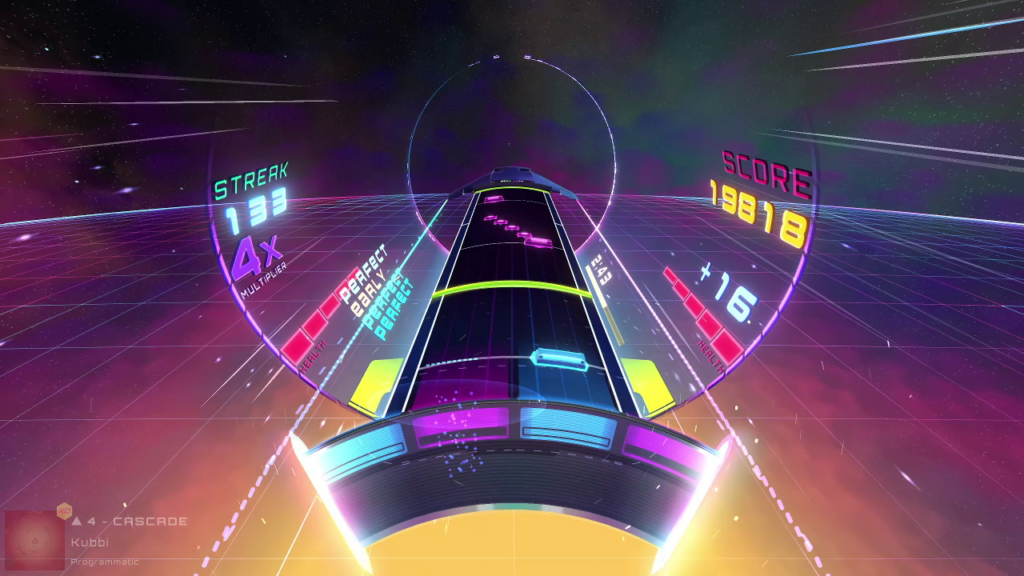
As a result, it became easier for me to see what was wrong my own charts as well as most of the customs that I played, and I could identify certain common mistakes, such as misquantization, backwards spins, and half interval color swaps, that plagued many of the earliest charts. Over time, charters got better at avoiding these mistakes, and only recently have we been able to find ways to “break” the established charting rules in ways that still play well.
When working on collabs, some of your collaborators have discussed how you tend to chart noticeably harder, or less standard, than you typically would in your solo charts. Is there any reason for this, such as having to match the other charters’ style and difficulty? Or does it happen as a result of something else?
I think the tendency for my collabs to be more complex stems from the fact that most of my collabs are on the harder end, usually in the 40s and 50s difficulty ranges. Most collabs I do are on songs that a different charter expresses interest in charting that I also happen to enjoy listening to, and those songs are usually more aggressive than some of the more laid back music I chart. While I don’t usually try to match my co-charter’s style, I do usually try to assume the difficulty range they would go for with the song that we’re charting.
Outside of charting, you’re also the one who programmed many of the various programs charters use, such as the SRTB editor, and the Chart Analyzer. What was the process of programmatically programming these programs, and why did you program them in the first place? Do you plan to program any more programs, or delve into modding the game itself?
I made SRTB editor mainly due to the tedium of manually writing in background addresses and preview bar values in the .srtb file itself. I knew I would be charting for a long time, and the .srtb format was already well documented, so I knew it would be worth spending a few hours to make a tool to facilitate the process.
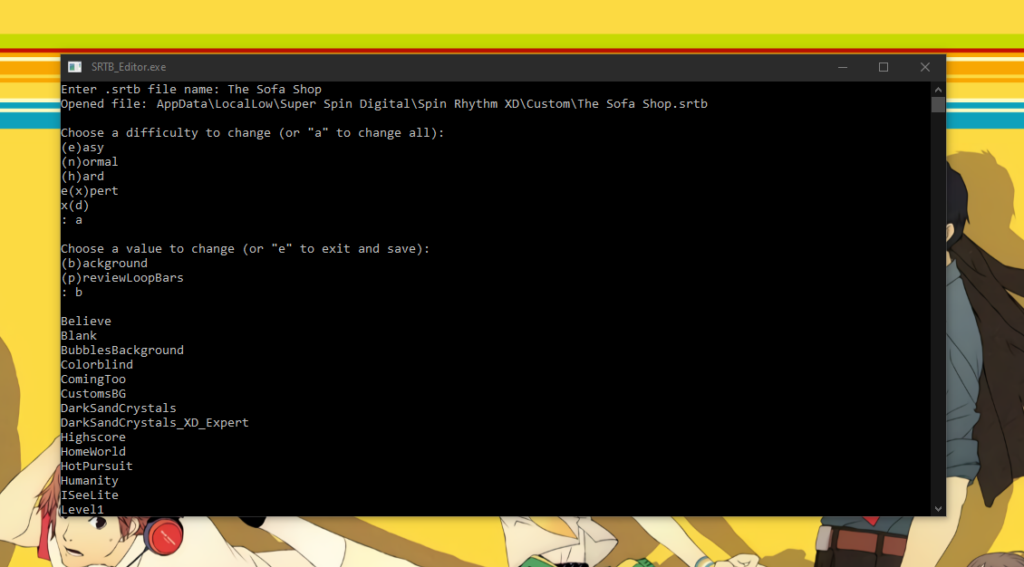
The chart analyzer was more of an experiment to see if I could objectively qualify some of the charting errors I had identified. The end result was less of a “quality check” for customs and more of a fun toy that let us see just how many mistakes there were in the old April charts. It would take a great deal of additional effort to polish the analyzer to the point that it would be a reliable tool for verifying charts, and with all the other things I want and need to do, I unfortunately don’t have the time to finish it.
I did also make a brief attempt at modding to see if I could create a bot that plays charts while in the editor, but there wasn’t enough information on the game’s code for me to figure out how to read chart data or control the wheel automatically.

Programmatic 01/28/2020
ngl that question hurt to read
You sure were desperate to write “program” as many times as possible, weren’t you?

imfallinfree 01/28/2020
yes
Charting Madeon’s Adventure album was one of your first major projects, and were also examples of what could be considered some of the earliest ‘standardized’ charts. What was it about the Adventure album that made you decide to chart it? Did your process for charting this early on differ from how you chart now? How do you feel about these charts in retrospect?

Adventure is my favorite electronic music album of all time. There were so many songs that I wanted to chart from the album that I decided I might as well chart the whole thing. The Adventure charts were definitely some of my first “decent” charts, though a few I don’t think have aged entirely well. Many of the charts followed the base game standard of arbitrarily omitting beats, something that you never see in modern customs. There were also even a few cases of Darnoc spins and matches after spins that I didn’t catch until long after I finished the project.
In the same area as Madeon – that sort of electronic rock and electronic pop style of music, you’ve also charted artists such as Anamanaguchi, Kubbi, and Porter Robinson. What was it about these artists you enjoy, and what made you want to chart their music?
Besides the fact that I just really like this kind of music, I think genres like these are somewhat underrepresented on SpinShare, with the preference of the most active charters leaning towards more aggressive or “rhythm game-like” music.
You’ve also charted a number of songs from Justice, Danimal Cannon & Zef, and Carpenter Brut; electronic artists with a noticeably grittier and harsher style of sound. What about this more industrial style of music appeals to you, and how does it translate into Spin Rhythm?
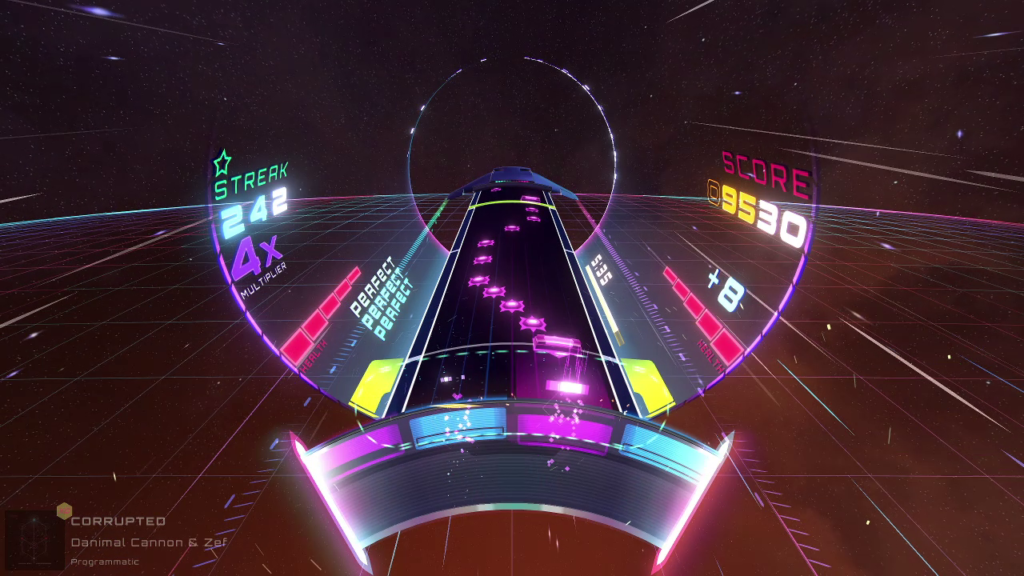
Justice is an artist that I had held off from charting for quite a way, given the repetitive nature of their music, as well as the dumpster fire of a chart that Stress turned out to be. It wasn’t until I got better at introducing more variety to my charts that I charted DVNO, and then later charted a few of my other favorite Justice songs. Danimal Cannon & Zef’s music was one of the first examples of music that I charted more specifically out of a want to make more complex charts, rather than just to spread awareness of the music. This culminated in some of my most difficult charts, including my hardest solo chart to date, Logic Gatekeeper. Lastly, Carpenter Brut is another one of my favorite artists, and I have plans to chart quite a few more songs by him in the future.
There’s also the numerous Crypt of the Necrodancer charts – every zone theme, in fact. What was it about the Necrodancer OST that made you want to chart these songs? Were there any notable differences between the styles of each zone that arose when charting them?
In addition to traditional electronic music, another large portion of the music that I listen to is video game soundtracks. However, a lot of the video game music I like is more atmospheric, repetitive, or otherwise not entirely fit for charting. Crypt is a clear exception, with music being a core part of its gameplay. The musical styles of Crypt’s different zones didn’t necessarily affect how I charted them, but the variety of different rhythmic styles and tempos definitely did. The music varies from straight 4/4 beats to swing to drum n’ bass drum patterns, and from pure electronic music to a fusion of electronic and metal, like with A Hot Mess.
Recently, you’ve also been dabbling in Risk of Rain 1 & 2 charts alongside juch.. What motivated you and juch. to decide to chart the OSTs for both games – what stood out about the OSTs for you two to chart them?
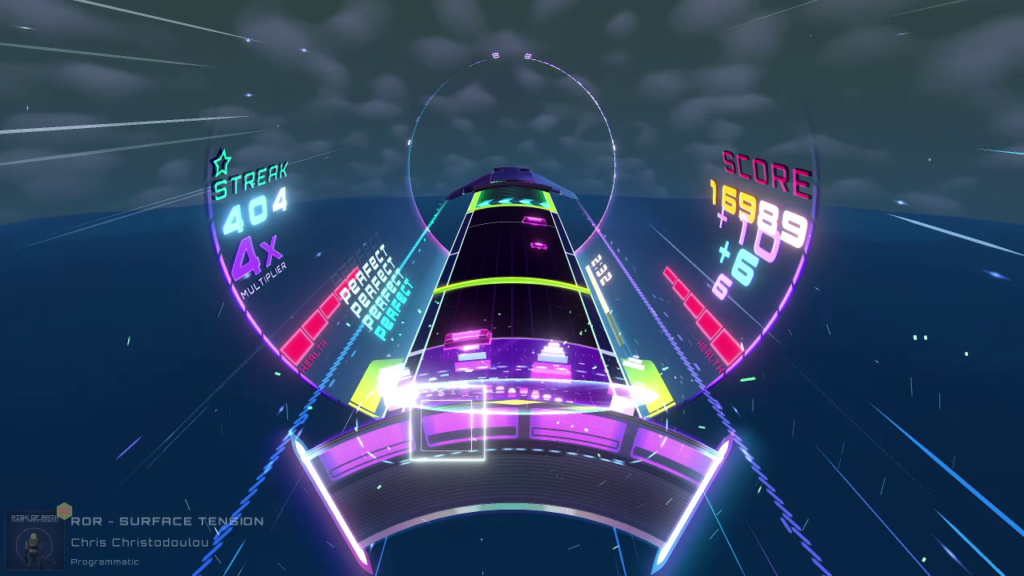
Risk of Rain 2 is a favorite multiplayer game of mine, juch.’s, and others’ in the SpinShare community, and the first Risk of Rain is another one of my favorite roguelikes. While the sequel’s soundtrack is juch.’s favorite of the two, I preferred the first’s overall, so when juch. told me he wanted to chart songs from ROR2, I said I’d be down to collab on some if we also did a few songs from the first game as well. The soundtracks also vary quite a bit from each other, with the first being more electronic and the second being more metal-oriented, which led to a lot of great chart material.
Are there any other artists or songs that you love outside of Spin Rhythm? Any that you want to chart, but just haven’t gotten around to yet – or you just don’t think their music would be a good fit for Spin Rhythm?
As I mentioned, there’s quite a bit of video game music that I like, but don’t plan on charting. On the other hand, pretty much every electronic composer I listen to has songs I want to chart, with some artists that I’ve only made a few charts for, such as Carpenter Brut, to artists that I haven’t made charts for, but plan to chart in the future, such as Owl City.

Programmatic 01/28/2020
This is gonna be the longest one yet isn’t it?

imfallinfree 01/28/2020
Damn I knew I wrote a lot of questions for you but I didn’t realize just how many until numbering them

Programmatic 01/28/2020
The questions wouldn’t stop coming lol
Alright, now let’s finish up. Of your charts, are there any that you’re particularly proud of? Which one was the most fun for you to chart?
The first chart that really stood out to me as one of my best was FTW by Let’s Be Friends, which remained one of my favorite charts to play for a while. Lorem Ipsum and Nemesis also stand out as some of my first really good high difficulty charts. Lastly, my most recent chart, PLAY (Chime Remix), might have been my favorite chart to make in quite a while, since it’s the first time I really tried to abandon most of my old standards and focus on making wacky, fun patterns.
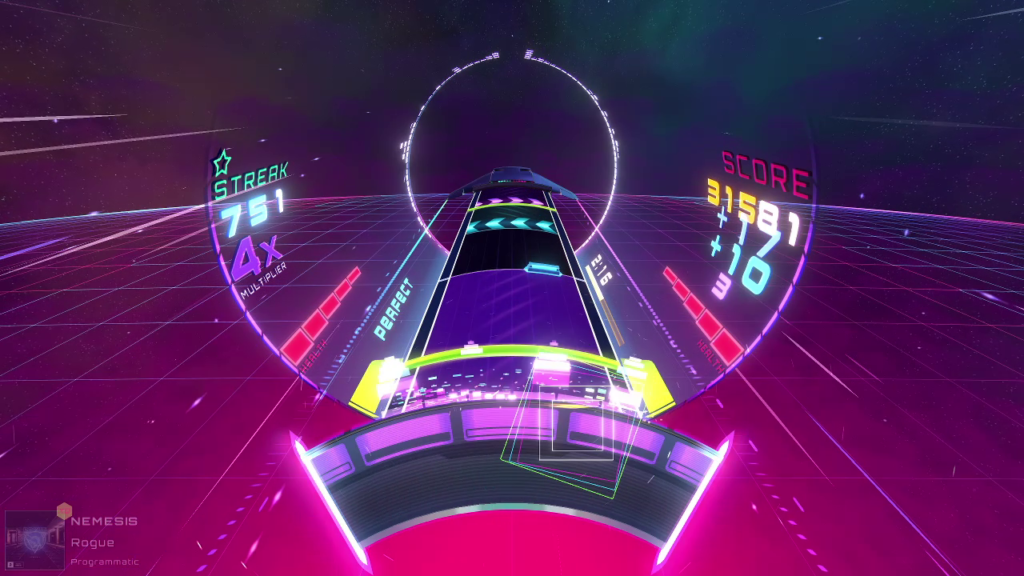
Any charts that you consider your favourite, or any that you feel got overlooked?
Stride’s chart of Time Traveler is probably my favorite chart in the 50s range, with it also being the hardest chart I’ve ever FCd. Some of my other favorites include Waxamole by juch., and Expedition by smb. Regarding overlooked charts, it seems like almost every artist showcase that gets uploaded goes under the radar. In particular, juch.’s Sonic CD showcases were great, but didn’t get nearly enough attention.
Anything that you have to say about the SpinShare community?
The SpinShare Discord is definitely a close contender for the best game community I’ve ever been a part of. Everyone is super friendly and I love all of the events that they’ve put together.
Any advice that you’d like to give for charters?
Tempo map your chart before you place a single note, please.
Is there anything else you’d like to add?
Play Celeste if you haven’t already. If you have, play it again anyway.

Programmatic 01/28/2020
Also: Archie

imfallinfree 01/28/2020
gotta get the sub 2:17 this time
One last thing: one pattern must be made illegal. Which pattern is now illegal?
I’d say readability puzzles, but that’s too general, so I’ll say ban backwards spins.

imfallinfree 01/29/2020
I lied, just one more thing I want to ask – chart?

Programmatic 01/29/2020
Uhh sure, I don’t have anything clever
